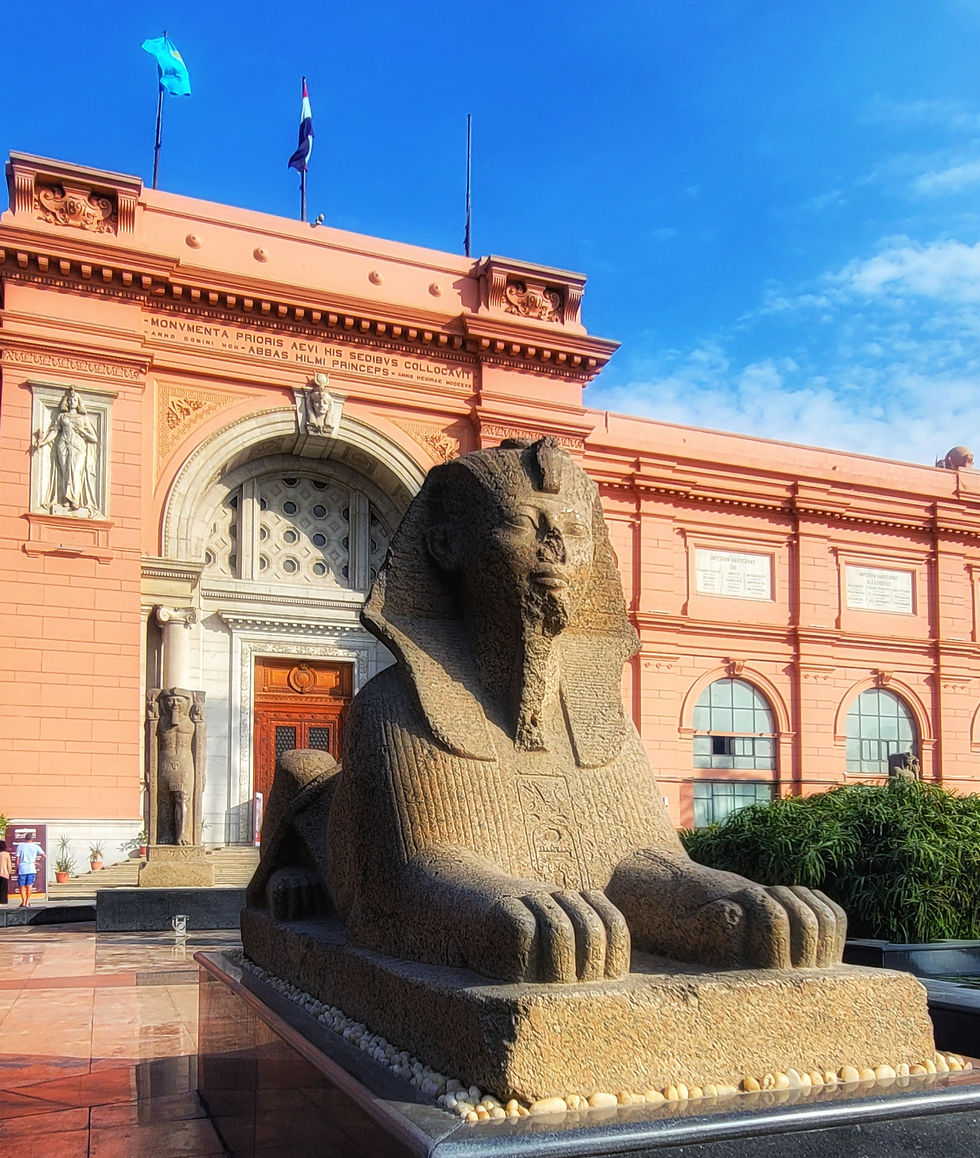Exploring the Mythical World of Sphinxes in Ancient Egypt
- Wendy Bradfield
- Aug 31
- 3 min read

The Great Sphinx of Giza is a captivating monument with a rich history, but it's not the only sphinx...the word “sphinx” conjures images of majestic stone creatures guarding ancient secrets—but did you know there’s more than one kind of sphinx?
These enigmatic beings appear across cultures, each with its own twist on the myth. Let’s take a whirlwind tour through the world of sphinxes and meet their multifaceted forms.
Egyptian Sphinxes: Three Royal Archetypes
The Great Sphinx of Giza is the most famous example of a sphinx, which is an androsphinx.
It has the body of a lion and a human head, but no wings.
In ancient Egypt, sphinxes weren’t just symbolic—they symbolized three distinct types, each representing a different divine or royal aspect.
Sphinxes in ancient Egypt:
Type | Description | Symbolism |
Androsphinx | Lion’s body, human head (usually male) | Royalty, wisdom, pharaonic power |
Criosphinx | Lion’s body, ram’s head | Fertility, protection, god Amun |
Hierocosphinx | Lion’s body, falcon head | Sky, divine vision, god Horus |
Famous Tale: Prince Thutmose IV fell asleep next to the Sphinx and had a dream where the Sphinx spoke to him and said, “Clear the sand off me, and you will become king.” He did it—and later became Pharaoh, just like the Sphinx promised. Thutmose erected the Dream Stela between the Sphinx’s paws to record the divine dream in which the Sphinx promised him kingship if he cleared away the sand.
Fun Fact: Sphinxes were often used as guardian figures along sacred causeways like at Luxor Temple, while forming processional paths near tombs, or as details on top of stair posts at grand complexes.

Egyptian Female Sphinxes (Less Common but Present)
While most Egyptian sphinxes are male (like the Androsphinx), there are female representations in temple art and mythology.
Some scholars associate female sphinxes with goddesses like Sekhmet (lion-headed) or Mut, emphasizing strength and protection.
These figures often appear in symbolic guardian roles, especially in funerary contexts.
Hatshepsut (above) had many sphinxes carved in her likeness. Many of which have survived in beautiful condition.

Greek Sphinx: The Riddle Master
Appearance: Female head, lion’s body, bird wings, serpent tail.
Symbolism: Mystery, danger, and fate.
Famous Tale: She challenged travelers with a riddle, and if they failed to solve it, she killed and ate them!

Asian Sphinxes: The Hybrid Protectors
In India: Known as Purushamriga (“man-beast”), often seen in temple architecture.
In Southeast Asia: Khmer and Thai temples feature sphinx-like guardians with regional flair.
Symbolism: Protection, wisdom, and spiritual guardianship.

Hieracosphinx, Edfu Temple, Egypt Renaissance & Neoclassical Art Sphinxes
Female sphinxes gained popularity in European decorative arts, particularly during the Renaissance and Neoclassical periods.
Often depicted as sensuous, mysterious women with lion bodies, used to evoke themes of temptation, secrecy, and wisdom.
These artistic sphinxes weren’t tied to specific myths but were symbolic figures in allegorical paintings, furniture, and architecture.
Modern Interpretations
Contemporary literature and fantasy often reimagine the sphinx as female—wise, cryptic, and powerful.
In some modern retellings, she’s portrayed as a keeper of ancient secrets, blending myth with feminist symbolism.

Mysterious Origins
The sphinx is a shape-shifter across time and geography, embodying whatever a culture most fears—or reveres. Whether guarding tombs or adorning palaces, sphinxes remind us that mystery is a universal language.
Despite its magnificence, nobody knows for certain who built the most famous sphinx of all: The Great (andro) Sphinx of the Giza Plateau. Some say it's the face of Khafre, pharaoh of the Fourth Dynasty, while others suggest it predates Khafre's reign.
The Great Sphinx was called by many names throughout history, with "Sphinx" being the Greek name.
The modern Egyptian Arabic name for the Great Sphinx is "Abu al-Hol," which translates to "Father of Terror" —a perfect name for this ancient monument's awe-inspiring, eternal nature.




Comments